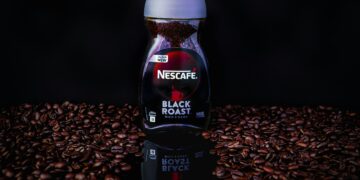Table of Contents
For more than a decade, I’ve been on a quest.
As a home coffee practitioner, I’ve chased the perfect cup across countless methods—from the scientific precision of a pour-over to the rustic charm of a French Press. I thought I had a handle on it all.
Then, I tasted New Orleans cold brew for the first time, right there in the heart of the French Quarter, the air thick with the sweet scent of powdered sugar and the distant sound of a lone saxophone.
It was unlike anything I’d ever had.
It was impossibly smooth, profoundly bold, yet creamy and sweet without a hint of the harsh bitterness that so often plagues iced coffee.
That single cup, enjoyed at a wrought-iron table at a place like Café Du Monde, became a ghost that haunted my kitchen.1
I became obsessed with recreating it.
I dove into the internet, collecting recipes and following them with the meticulousness of a lab technician.3
I bought the right gear, the right beans, the right chicory.
Yet, every attempt was a pale, disappointing imitation.
My brews were often thin, sometimes acrid, and always lacking the soulful depth of that first memory.
They were technically “cold brew,” but they were lifeless.
The breaking point came with what I now call the “Premium Bean Debacle.” Convinced that the secret must lie in the quality of the coffee itself, I splurged on a bag of expensive, single-origin dark roast beans—the kind with a complex flavor profile that baristas rhapsodize about.6
I followed a popular online recipe to the gram, steeping the coarsely ground beans for exactly 12 hours at room temperature.
The result was a disaster.
The brew was shockingly bitter, a harsh, acidic caricature of the smooth, mellow drink I was chasing.
It was a heartbreaking failure that made me question everything I thought I knew.
I had followed the instructions perfectly, yet the outcome was a complete betrayal of the authentic experience.
It was then I realized that simply following a list of ingredients wasn’t enough.
I was missing the “why.”
The Epiphany: It’s Not a Recipe, It’s a Restoration Project
Defeated, I stepped away from the coffee grinder.
My epiphany came from a completely unexpected place: a late-night documentary about the architectural restoration of a historic building in the French Quarter.
I watched as craftsmen painstakingly analyzed the original structure, studied the materials used by the 19th-century builders, and employed time-honored techniques to bring the building back to its former glory.
They weren’t just slapping on a coat of paint; they were reviving its soul.
Suddenly, it all clicked.
I had been treating New Orleans cold brew like a modern, prefab furniture kit—just follow the instructions and assemble the pieces.
That was my mistake.
Making true New Orleans cold brew is not like following a recipe; it’s like restoring a historic building.
This new paradigm shifted my entire perspective.
A proper restoration project demands respect for three core principles, and I realized that making this coffee required the same reverence:
- The Foundation (The History): You must first understand the original blueprint—the circumstances of its creation and the purpose it was meant to serve. The history isn’t just trivia; it dictates the entire flavor profile.
- The Structural Materials (The Ingredients): You must use materials authentic to the original design, not just convenient modern equivalents. The choice of coffee, the type of chicory, and even the water are the bricks, wrought iron, and mortar of the final structure.
- The Craftsmanship (The Technique): You must embrace the patient, time-honored methods of the original builders. Modern shortcuts and haste will only compromise the integrity of the final product.
Armed with this new framework, I went back to the drawing board.
I wasn’t just making coffee anymore; I was undertaking a culinary restoration.
And in doing so, I finally unlocked the secrets to that perfect cup.
Pillar I: The Foundation – Why Necessity Forged an Identity
To restore something, you must first understand its blueprint.
For New Orleans cold brew, that blueprint is its history—a story of French ingenuity, wartime necessity, and the birth of a unique cultural icon.
I learned that ignoring this history was the primary reason my early attempts failed; I was building without a foundation.
The story begins not in Louisiana, but in 19th-century France.
During the Napoleonic wars, a continental blockade cut off coffee imports, forcing the French to find a substitute.
They turned to roasted chicory root, which could be grown locally and, when brewed, produced a beverage with a similar color and body.7
This act of resourcefulness planted a cultural seed.
That seed traveled across the Atlantic to New Orleans.
By 1840, the city was a bustling hub of commerce and the second-largest coffee importer in the United States.8
Coffee was deeply woven into the fabric of daily life.
Then came the American Civil War.
Union naval blockades choked the port of New Orleans, and just as in Napoleonic France, coffee shipments ground to a halt.7
Faced with a crisis, desperate New Orleanians drew upon their French heritage.
To stretch their dwindling, precious coffee supplies, they began mixing them with ground, roasted chicory root.7
It was an invention born of pure necessity.
But here is the crucial part of the story, the part I had missed entirely.
After the war ended and the blockades were lifted, coffee once again flowed freely into the city.
In most of America, chicory was forgotten, a relic of hard times.
But not in New Orleans.
There, the practice not only continued but became a cherished tradition, a defining characteristic of the local coffee culture.7
This revealed a profound truth: the “fix” had become an identity.
The flavor created by the blend of coffee and chicory—bold, earthy, with a mellow sweetness and a smooth, full body—was not just tolerated; it was actively embraced and loved.
The hardship hadn’t just produced a temporary workaround; it had forged a new and distinct culinary masterpiece.
Understanding this was my first major breakthrough.
Chicory is not an optional additive or an adulterant used to cut costs.
It is a non-negotiable, foundational element of the drink’s historical blueprint.
To make authentic New Orleans cold brew without chicory is like trying to imagine a French Quarter building without its iconic wrought-iron balconies—it simply erases its character and soul.
My “premium bean debacle” failed because I was trying to build a modern structure on a historic foundation, ignoring the very material that gave it its identity.
Pillar II: The Structural Materials – The Sacred Trinity of Coffee, Chicory, and Water
With the historical blueprint understood, the next step in my restoration project was to source the right structural materials.
A historic building can’t be restored with flimsy, modern drywall; it needs the authentic bricks, iron, and mortar of its time.
For New Orleans cold brew, those materials are a sacred trinity: the right coffee, the right chicory, and the right water.
The Bricks: Choosing the Right Coffee
The coffee itself forms the structural base of the drink.
It needs to be robust, strong, and capable of standing up to the other powerful flavors.
My mistake with the expensive, nuanced single-origin bean was like trying to build a fortress wall with delicate, artisanal bricks—they simply weren’t designed for the job.
The consensus from both historical practice and modern experts is clear: dark roasts are the way to go.6
The cold brewing process naturally produces a less acidic coffee, and a dark roast enhances this quality, bringing out bold, chocolatey, and nutty notes that harmonize perfectly with chicory’s earthy profile.6
Beans from Latin America or Indonesia are particularly well-suited for this purpose.6
Using a bright, fruity, high-acidity light roast would create a jarring dissonance, a flavor clash that results in the sourness I had experienced.
Furthermore, some of the most authentic blends incorporate not just Arabica but also Robusta beans.11
This isn’t merely for a higher caffeine content.
Robusta beans are known for their powerful, full-bodied, and intense character.
In the context of our restoration analogy, adding Robusta is like reinforcing the mortar with extra strength—it ensures the foundation is unshakeably bold, ready to support the addition of chicory, milk, and sweetener without getting lost.
The Wrought Iron: The Indispensable Role of Chicory
If coffee is the brick, chicory is the ornate, essential wrought iron that gives the structure its unique identity.
It is both decorative and structural, providing flavor complexity and physical body.
Chicory is the roasted and ground root of a plant from the dandelion family, Cichorium intybus.9
When raw, the root is bitter, but the roasting process is transformative.
It caramelizes the root’s natural sugars, creating a flavor that is deep, woody, nutty, and slightly sweet, with notes of toffee or chocolate.15
It contains no caffeine.16
Its first role is as a flavor partner.
As one expert from Southern Living explains, chicory and coffee have complementary flavors that “highlight and intensify each other”.18
It doesn’t just mimic coffee; it adds a layer of earthy, botanical bitterness and roasted sweetness that makes the final drink more complex and layered than coffee alone.18
But its second role, which I had completely underestimated, is as a textural agent.
Coffee experts and producers consistently refer to the “viscosity,” “mouthfeel,” and “body” that chicory imparts.19
The science behind this is fascinating.
Chicory root is significantly more soluble in water than coffee grounds.
It yields 45-65% of its mass as soluble extractive matter, compared to just 20-25% for coffee.22
This is largely due to its high concentration of inulin, a type of prebiotic fiber.15
When steeped, these soluble fibers dissolve readily into the water, creating a brew that is physically thicker, with a richer, more viscous, almost nectar-like body.24
This was a revelation.
My previous failed brews were thin and weak not just in flavor, but in their physical presence.
I was missing the very ingredient that gives the drink its satisfying weight and smooth mouthfeel.
Chicory isn’t just a seasoning; it’s a key structural component that changes the very texture of the liquid.
The Mortar: The Critical Importance of Water
Every master builder knows that even the finest bricks and iron are useless if held together by weak or impure mortar.
In cold brewing, water is that mortar.
Since the final concentrate is over 98% water, its quality is not a minor detail—it is paramount.
Multiple sources strongly advise against using plain tap water, recommending filtered water instead.26
The reasoning is simple.
The cold brew process is a slow, gentle, and extended extraction.
Any impurities in tap water, such as chlorine or excessive mineral content, will have ample time to interfere with this delicate process.
They can introduce off-flavors, react negatively with the coffee and chicory compounds, and ultimately contribute to the bitterness and harshness I experienced in my failed batches.26
Using filtered water is the simplest and most effective way to ensure a clean, neutral foundation.
It is the pure mortar that allows the flavors of the coffee and chicory—the bricks and iron—to bind together harmoniously and express their true character without interference.
Pillar III: The Assembly – The Art of Patient Craftsmanship
Understanding the history and sourcing the right materials are only the first steps.
A restoration project can still fail if the assembly is rushed or imprecise.
The third pillar is craftsmanship—the patient, methodical process of bringing the elements together according to the blueprint.
This means mastering the ratios and embracing the unskippable virtues of the grind, the steep, and the strain.
The Blueprint: A Definitive Guide to Ratios
One of my biggest frustrations was the wildly inconsistent advice on ratios.
Recipes called for everything from a 1:4 to a 1:8 coffee-to-water ratio, often using unreliable volume measurements.5
A true craftsman works from a precise, dependable blueprint.
For cold brew, that means measuring by weight, not volume, as different beans and grind sizes have different densities.
After synthesizing the most credible sources, I developed a master blueprint that provides a reliable starting point for a classic, bold New Orleans-style concentrate.
The most common and authentic coffee-to-chicory blend is around 80% coffee and 20% chicory, though some go as high as 70/30.16
For the water ratio, a 1:6 ratio of total grounds-to-water by weight is a robust and effective standard for creating a strong concentrate.28
Table 1: The Master Ratio Blueprint (By Weight)
| Ingredient | Standard Ratio (Bold Brew) | Lighter Ratio (Beginner) | Notes / Rationale |
| Coarsely Ground Dark Roast Coffee | 4 parts | 4 parts | The structural base. Dark roast provides the necessary bold, low-acid foundation.6 |
| Coarsely Ground Roasted Chicory | 1 part | 0.5 parts | The character-defining element. Provides flavor complexity and crucial viscosity.19 |
| Total Coffee/Chicory Blend | 5 parts total | 4.5 parts total | This creates a classic 80/20 coffee-to-chicory blend. |
| Cold, Filtered Water | 30 parts (1:6 grounds to water) | 27 parts (1:6 grounds to water) | A 1:6 ratio by weight produces a strong, versatile concentrate ready for dilution.28 |
| Example Batch | 224g Coffee + 56g Chicory = 280g blend. Add 1680g (1.68 L) Water. | 240g Coffee + 30g Chicory = 270g blend. Add 1620g (1.62 L) Water. | Always measure by weight for consistency. |
The Technique: The Unskippable Virtues of Grind, Time, and Temperature
With the blueprint in hand, the actual assembly is a study in patience.
The Grind: The first rule of craftsmanship is to use the right tool for the job.
For cold brew, this means a coarse grind is non-negotiable.
The grounds should resemble the texture of coarse sea salt or cornmeal.3
Using a fine grind, like for espresso, is one of the most common and fatal errors.
The vastly increased surface area of a fine grind will cause the coffee to over-extract during the long steep, releasing an abundance of bitter compounds and creating a sludgy, unpleasant brew.12
A coarse grind is essential for the slow, gentle extraction that defines cold brew’s smooth character.
The Steep: The process itself is beautifully simple.
Combine the ground coffee and chicory with cold, filtered water in a large, non-reactive vessel like a glass jar or a stockpot.
Stir gently but thoroughly to ensure all the grounds are fully saturated.3
Then, cover the container and wait.
This is where patience becomes a virtue.
The standard steeping time is 12 to 24 hours at room temperature.3
If you choose to brew in the refrigerator, you must extend the time to account for the slower extraction rate in the cold; a steep of
18 to 24 hours is more appropriate.26
The Strain: After the long, patient steep, the final step is to separate the liquid gold from the grounds.
Here, again, haste is the enemy.
Do not force the liquid through the filter by squeezing or pressing the cheesecloth or filter bag.
This action will push fine, bitter sediment and unwanted acidic compounds into your beautiful concentrate, undoing all your patient work.26
A true craftsman lets gravity do the work.
Strain the concentrate slowly through a fine-mesh sieve lined with a few layers of cheesecloth or a large paper coffee filter.
For an exceptionally clean concentrate, you may even want to strain it a second or third time.5
The reward for your patience is a wonderfully smooth, clean, and rich concentrate.
Pillar IV: The Finishing Touches – Serving Your Masterpiece
The restoration is complete, but the building is not yet ready for inhabitants.
The final pillar is presentation—the finishing touches that transform the raw structure into a welcoming home.
For New Orleans cold brew, this means mastering the art of dilution and sweetening.
The Final Assembly: The Art of Dilution
Perhaps the most common mistake a novice makes is drinking the cold brew concentrate straight from the jar.
This is like drinking a shot of espresso and expecting it to taste like a latte.
The liquid you have so patiently crafted is a concentrate—it is intentionally intense and far too strong to be enjoyed as-Is.12
The classic New Orleans serve is a masterclass in balance.
- Fill a tall glass generously with ice.
- Pour in the cold brew concentrate and milk (or a non-dairy alternative) in roughly equal parts. A 1:1 ratio is the traditional starting point.4
- Stir and taste. From this baseline, you can adjust to your personal preference. If you prefer a stronger coffee flavor, use slightly more concentrate. If you like it creamier, add more milk. This final act of balancing is what makes the drink your own.
The Sweetness: A Nod to Tradition
New Orleans cold brew is traditionally served sweet, providing a delightful counterpoint to the bold, earthy flavors of the coffee and chicory.
To achieve the authentic, seamless sweetness you’d find in a NOLA café, it’s best to use a simple syrup.
This is made by combining equal parts sugar and water in a small pot and warming it over low heat until the sugar has completely dissolved.3
Using simple syrup prevents the awkward graininess of undissolved sugar crystals and ensures the sweetness is perfectly integrated into the cold drink.
While you can sweeten the entire batch of concentrate, be aware that this reduces its shelf life from about a week to only a couple of days in the refrigerator.3
Sweetening each glass to taste is often the better approach.
A Craftsman’s Troubleshooting Guide – Avoiding the Pitfalls of Modern Haste
Even the most careful craftsman can encounter issues.
The key is to understand the cause and know the solution.
This guide reframes common cold brew problems through the lens of our restoration analogy, helping you diagnose and fix any flaws in your technique.
Table 2: Cold Brew Troubleshooting Guide
| Problem (The Symptom) | Likely Cause (The Flaw in Craftsmanship) | Solution (The Master’s Fix) |
| Tastes Bitter, Harsh, or Acrid | The materials were overworked. This is caused by a grind that is too fine, leading to over-extraction. Other causes include steeping for too long or squeezing/pressing the filter during straining.12 | Use a proper coarsely ground coffee and chicory. If the brew is still too strong, reduce the steep time by a few hours. Always strain gently, letting gravity do the work. |
| Tastes Weak, Thin, or Watery | The materials were underworked. This is likely due to a grind that is too coarse, preventing proper extraction. Other causes are steeping for too short a time or over-diluting the final drink.26 | Use a slightly finer grind (while still keeping it coarse). Increase the steep time, especially if brewing in the refrigerator. When serving, start with a 1:1 dilution and adjust by adding less milk/water. |
| Concentrate is Cloudy or Sludgy | The assembly was messy. This is a clear sign of a grind that was too fine, allowing sediment to pass through the filter easily. It can also be caused by insufficient filtering.5 | Ensure you are using a consistent, coarse grind. Strain the concentrate multiple times. A pass through a fine-mesh sieve followed by a second pass through cheesecloth or a paper filter will produce a cleaner result. |
| Tastes “Off” or Has Strange Flavors | The mortar was impure. This is almost always caused by using unfiltered tap water. The chlorine and other minerals in tap water introduce unwanted flavors during the long steep.26 | Always use cold, filtered water. This is a simple change that ensures a clean, pure base for your brew, allowing the coffee and chicory to shine. |
Conclusion: Bringing the French Quarter Home
My journey to understand New Orleans cold brew ended where it began: with a glass of dark, creamy, perfectly balanced coffee.
But this time, it was in my own kitchen.
As I took the first sip of the brew I had made using my new “restoration” framework, the ghost was finally laid to rest.
The color was a deep, rich mahogany.
The aroma was a complex harmony of roasted nuts, dark chocolate, and that unmistakable earthy sweetness of chicory.
And the taste—it was all there.
The bold, smooth coffee foundation, the complex and viscous body from the chicory, the creamy coolness of the milk, and the gentle, integrated sweetness of the syrup.
It was the taste of success, born not from a recipe, but from a deeper understanding.
By viewing this iconic drink not as a simple mixture but as a piece of culinary history to be respected and restored, the entire process was transformed.
The history provided the blueprint, the ingredients became the authentic materials, and the technique became the patient craftsmanship.
This approach moves you beyond the frustrating cycle of trial and error and empowers you to become a true artisan in your own home.
You are no longer just mixing ingredients; you are reviving a piece of New Orleans’ resilient, inventive, and delicious soul.
Works cited
- Welcome to Cafe Du Monde New Orleans | French Market Coffee Stand • French Market Coffee Stand, accessed August 2, 2025, https://shop.cafedumonde.com/
- I feel like I have been lied to. Café Du Monde is not what I expected. Someone help me out. : r/AskNOLA – Reddit, accessed August 2, 2025, https://www.reddit.com/r/AskNOLA/comments/1bspkpm/i_feel_like_i_have_been_lied_to_caf%C3%A9_du_monde_is/
- New Orleans-Style Iced Coffee Brew Guide | Blue Bottle Coffee, accessed August 2, 2025, https://bluebottlecoffee.com/us/eng/brew-guides/new-orleans-style-iced-coffee
- New Orleans Cold-Brew Iced Coffee Recipe – Reily Products, accessed August 2, 2025, https://reilyproducts.com/recipes/new-orleans-cold-brew-iced-coffee/
- “Black Gold”: New Orleans Iced Coffee Concentrate Inspired by Cafe Du Monde Cold Brew, accessed August 2, 2025, https://food52.com/recipes/4457-black-gold-new-orleans-iced-coffee-concentrate
- What Are the Best Coffee Beans for Cold Brew?, accessed August 2, 2025, https://www.ictcoffee.com/news/what-are-the-best-coffee-beans-for-cold-brew/
- Coffee in New Orleans, accessed August 2, 2025, https://neworleanshistorical.org/items/show/1393
- The History of the Chicory Coffee Mix That New Orleans Made Its Own, accessed August 2, 2025, https://www.smithsonianmag.com/arts-culture/chicory-coffee-mix-new-orleans-made-own-comes-180949950/
- Chicory Coffee – necessity IS the mother of all inventions, accessed August 2, 2025, https://kavericoffee.com/blogs/culture/chicory-coffee-origins
- neworleanshistorical.org, accessed August 2, 2025, https://neworleanshistorical.org/items/show/1393#:~:text=City%20lore%20dictates%20that%20during,to%20stretch%20out%20the%20supply.
- www.maverickandfarmer.com, accessed August 2, 2025, https://www.maverickandfarmer.com/products/copy-of-cold-brew-new-orleans-style#:~:text=Arabica%20is%20our%20go%2Dto,boost%20when%20you%20need%20it.
- The Right Way to Make Cold Brew Coffee, According to the Pros – Martha Stewart, accessed August 2, 2025, https://www.marthastewart.com/7843793/how-make-cold-brew-coffee-at-home
- Cold Brew Blend – Orleans Coffee, accessed August 2, 2025, https://orleanscoffee.com/product/cold-brew-coffee-blend/
- Cold brew – New Orleans Style – Maverickandfarmer, accessed August 2, 2025, https://www.maverickandfarmer.com/products/copy-of-cold-brew-new-orleans-style
- Chicory Coffee: A Healthy Alternative to Coffee? – Healthline, accessed August 2, 2025, https://www.healthline.com/nutrition/chicory-coffee
- What Is Chicory? What Does It Have to Do With Coffee? – Allrecipes, accessed August 2, 2025, https://www.allrecipes.com/article/chicory-coffee/
- Why is chicory mixed with coffee in South Indian filter coffee?, accessed August 2, 2025, https://global.pandurangacoffee.com/blogs/list/chicory-south-indian-filter-coffee-exploration
- What Is Chicory Coffee And Why Is It So Popular In New Orleans? – Southern Living, accessed August 2, 2025, https://www.southernliving.com/food/what-is-chicory-coffee
- How Chicory Came to Be a Fixture of New Orleans’ Coffee Culture – Louisiana Cookin’, accessed August 2, 2025, https://louisianacookin.com/how-chicory-came-to-be-a-fixture-of-new-orleans-coffee-culture/
- What is chicory coffee? All about this unique variety of our beloved morning drink – The Manual, accessed August 2, 2025, https://www.themanual.com/food-and-drink/chicory-coffee-history/
- Iced Coffee Blend, accessed August 2, 2025, https://www.frenchtruckcoffee.com/products/iced-coffee-blend
- What Makes Chicory Coffee Unique? – Tasting Table, accessed August 2, 2025, https://www.tastingtable.com/1136655/what-makes-chicory-coffee-unique/
- What is Chicory? – Orleans Coffee, accessed August 2, 2025, https://orleanscoffee.com/what-is-chicory/
- Is Chicory Coffee Any Good? Or Just a Way to Stretch Coffee? – Serious Eats, accessed August 2, 2025, https://www.seriouseats.com/is-chicory-coffee-any-good-new-orleans
- Pure Coffee vs Coffee with Chicory: What’s the Difference? – Fresh Brew Cafe, accessed August 2, 2025, https://freshbrewcafe.com/blogs/fbc-blog/pure-coffee-vs-coffee-with-chicory-whats-the-difference
- Six Common Mistakes When Making Cold Brew Coffee – Grounds …, accessed August 2, 2025, https://groundsandhoundscoffee.com/blogs/recent-posts/six-common-mistakes-when-making-cold-brew-coffee
- Avoid Common Cold Brew Mistakes — Grab Coffee Gear From Fellow, Brita, and OXO, From $8 – Food & Wine, accessed August 2, 2025, https://www.foodandwine.com/cold-brew-gear-for-better-coffee-amazon-11772829
- Cold Brew Iced Coffee Recipe – Serious Eats, accessed August 2, 2025, https://www.seriouseats.com/cold-brew-iced-coffee
- Does anyone hear make New Orleans style Iced Coffee : r/Coffee, accessed August 2, 2025, https://www.reddit.com/r/Coffee/comments/205c3k/does_anyone_hear_make_new_orleans_style_iced/
- New Orleans Cold Brew Concentrate – Cothas Coffee & Chicory …, accessed August 2, 2025, https://thehiddengrounds.com/products/new-orleans-cold-brew-cothas-coffee
- How To Make New Orleans Cold Brew Coffee – – Sparkling Charm, accessed August 2, 2025, https://www.sparklingcharm.com/how-to-make-new-orleans-cold-brew-coffee/






